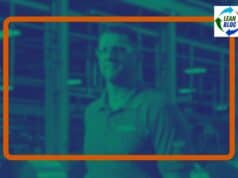Case of the Vanishing Airport Lines – WSJ.com
This article made me think of Lean in the sense that Alaska Air radically rethought the passenger check in process and achieved some dramatic results:
In Anchorage, the airline expected a 20% to 30% increase in agent productivity but in fact cut agents' times with passengers in half. While the number of Anchorage passengers has increased by 9% since the new concourse opened, the airline not only hasn't increased agent staffing but has reassigned some agents to other duties. No jobs have been lost. And a third bag-drop station in the lobby, not needed for now, has been temporarily leased to Northwest Airlines Corp.
The airline doesn't claim to have used Lean thinking, but look at the results. Toyota's system was described as “Lean” in The Machine That Changed the World because of their results — basically getting by with half of everything — half the space, half the defects, etc. Alaska Air doubled their agent productivity and cut passenger waiting time dramatically. Delta copied the approach in Atlanta, with similar results:
Greg Kennedy, Delta's vice president for customer service there, says the new layout has enabled the airline to process passengers checking in during the peak spring break travel period in 20 to 30 minutes at most, compared with two or three hours three years ago — and all in the same amount of square footage but 50% more usable space.
As we've come to understand Lean better, we know we can define it by the methods, as well as the results. Methods and process are important, but it's really the results that matter — are you improving your business for the long term?
Thinking about Alaska's situation, it's great to see that they are using the improvements to facilitate passenger growth instead of driving layoffs. With productivity doubled, a more traditional airline and management system would probably look to lay off employees. Alaska reassigned employees — I assume they really do think employees are an asset rather something to be tossed aside when not needed (sort of like the way Northwest treats their pilots).
How did Alaska improve their process? They didn't ask employees to work harder or to do their value added work faster — they changed the fundamentals of the passenger check in process.
Alaska built their new terminal without the typical shallow space and long check in counters with weaving lines. Their new lobby is deep and airy, with plenty of windows and space. The new design has standalone automated kiosks (which is nothing new), but they have a number of standalone “bag drop” stations to leave your bags if you're checking them.
The article also mentions the resistance to change, in terms of “we've always done it this way.”
But it's often difficult to make the existing space work or persuade airport authorities — who have the last call — to deviate from the tried and true.
I'm sure it's easier to put this new design into a “greenfield” terminal instead of converting an existing one. This is often true with Lean factory designs, right?
Another aspect of their design process that reminds me of Lean is the use of pilots and prototypes. Employees were skeptical, but busloads of tour group passengers suddenly appeared. The supervisor decided to try to the prototype and it worked beautifully. The employees were now convinced!! This often happens, you have to run an experiment and ask people to give it a try, to see if it works or not. This is the “PDCA” cycle in practice.
I visited a blood bank operation that had converted their old departmental layout to a number of u-shaped Lean cells. Employees were skeptical after the conversion and the supervisor went away on vacation. Employees changed the area back when the boss was away, but they quickly learned (through experience) that the u-shaped cells really had been more efficient. Rather than forcing “buy in”, the employees proved it to themselves and changed the layout back to the cells. They sold themselves on the ideas!!
When Alaska tried the new process in Seattle, some tweaks were made — continuous improvement, or “kaizen” at work:
“At times, there were tensions,” Mr. Reis recalls. “We had dynamic but productive conversations over the right way to do this.” The changes refined the placement of the kiosks, the bag-drop positions and the distance between the bag belts to provide maximum processing capability.
Mr. White says one design change for Seattle will be locating the small, conventional check-in desks out of direct view of people entering the building, so they won't automatically gravitate toward them. “The visibility of something that looks traditional is a magnet,” he says. “When they see it, they want to get in line.”
The passengers had to be re-trained! It appears that they considered things from a passenger perspective. Instead of thinking, “stupid customers,” they probably thought, “Why would people naturally gravitate at the wrong place?” There were natural signals (combined with past experience) that drew people there. Instead of putting up tons of signs (or yelling at the passengers, as some airlines do), they fixed the “root cause” of the problem.
Great stuff! There's definitely lessons we can learn from this to apply to our own improvement work…
What do you think? Please scroll down (or click) to post a comment. Or please share the post with your thoughts on LinkedIn – and follow me or connect with me there.
Did you like this post? Make sure you don't miss a post or podcast — Subscribe to get notified about posts via email daily or weekly.
Check out my latest book, The Mistakes That Make Us: Cultivating a Culture of Learning and Innovation:










It’s also worth noting that the airline used process improvement to ELIMINATE the lines rather than using technology that gives better visibility into the lengths of queue, etc.